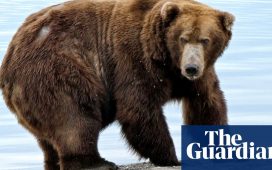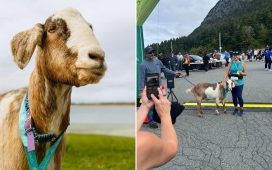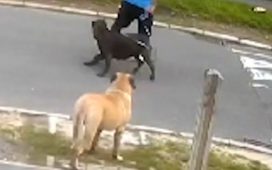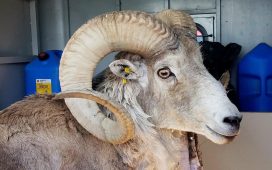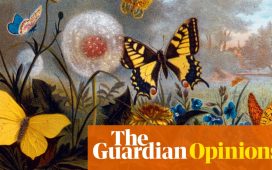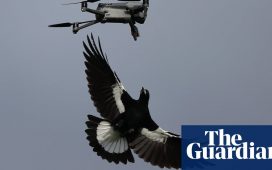After a steep fall in temperature overnight, I’m wishing I’d worn gloves this morning. Common darter dragonflies are feeling the cold too, lined up along the handrail of the boardwalk through the reedbed, catching the first hint of warmth as the sun creeps over the treetops.
A female darter shares her sunbathing perch with flies, easy prey in mortal danger, but safe until their cold-blooded predator reaches working temperature. She is so torpid that I can peer into those enormous wraparound, all-seeing eyes from just a few inches away. She begins to fidget, raises her body, performs knees-bend leg exercises, and then a tremor travels through those wrinkled cellophane wings. In a moment she’ll fly, but first, one more system to test: her head rotates, on that slenderest of necks, clockwise then counterclockwise.
Why does she do that? Does her world turn upside down when her head inverts? What does she see through those monstrous, multifaceted compound eyes? These ancient insects are so anatomically mechanical, so like automata in behaviour, so alien to human sensory experience, that they defy anthropomorphic comparison. But I’m wondering whether the clue to the conundrum of the rotating head lies in a dog-fighting manoeuvre perfected by the German first world war air ace Max Immelmann.
The Immelmann, an aerobatic stunt often performed by pilots wowing earthbound crowds, requires a half-loop until the aeroplane is inverted, followed by a half-roll, restoring level flight but in the reverse direction of travel. I’ve sometimes watched dragonflies execute something similar over this reedbed, in pursuit of passing prey. Could it be that that pivoted head allows a dragonfly’s vision to lock on to victims, whatever the orientation of the rest of its body? Or did I read too many Biggles adventures as a child?
There’s still an icy chill in the air as I head for the visitor centre cafe: this homeothermic mammal needs to stoke his internal heating system. On the way, I pass grounded speckled wood butterflies, wings spread to capture weak rays of the morning sun, and a hoverfly sheltering in the bowl of a single burnet rose bloom, a floral solar furnace provided by the last rose of summer.
Country diary is on Twitter/X at @gdncountrydiary

